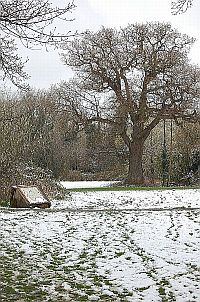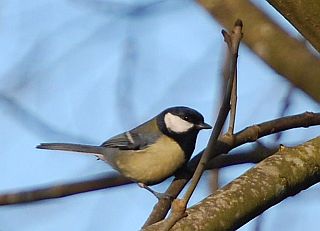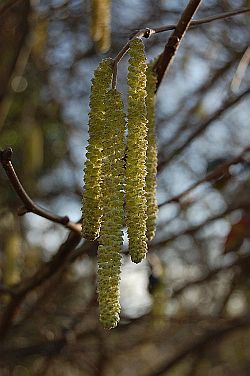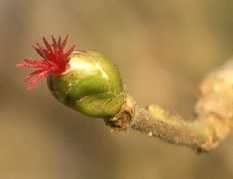This
Month on the Emmbrook
What to look for if you are out and about in
FEBRUARY
General

The month can be as harsh as any with snow and freezing winds. However it is possible to spot hints of better things to come. Although spring is still several weeks away the first signs are there to see.
Birds

Flocks of small birds moving through the trees including Great and Blue Tits accompanied by Finches, Nuthatches and Treecreepers are more easily visible in winter due to the lack of leaves on the trees. Their feeding has a real urgency . A few snatches of birdsong on a cold day remind us that winter is not for ever. By February, the birds will have begun to sing in earnest and we can think about looking forward to spring. Winter songsters are among those species that hold territories through the winter. Robins are one of the most vocal; they are unusual because both male and female hold their own territories in winter and both sing in their defence. Female song thrushes sometimes hold winter territories, but they do not sing. Wrens can be relied on for some powerful outbursts. Great tit, Nuthatch and Starling songs, while not tuneful, seem to me to be particularly cheerful. Out in the fields around the Toutley Bridge area, fine days also yield bursts of song from the Skylarks. And the mournful hoot of a Tawny Owl, heard as we lie warmly in bed, shows that the night is not dead. You may also be lucky enough to hear and see a Great- spotted Woodpecker drumming against a tree trunk in Riverside Walk.Great spotted Woodpeckers will start drumming in January as they establish their territories and attract a mate! Pairs will be monogamous during the breeding season but will change their partner each year!
Other Wildlife
Frogs are still emerging from their wintering hiding places and move towards their chosen breeding ponds.
Plants & Trees


Hedgerows along side the Emm show little sign of life other than the Hazel catkins. Its yellow dangling catkins which are the male flower spikes (or inflorescences) . Instead of using insects, lured by bright colours, scent or nectar, to do their pollinating these flowers instead use the power of the wind to blow pollen from the catkins to the inconspicuous female flowers, which resemble a tiny shock of red hairs protuding from the tip of the bud.
In woodlands the most obvious leaves to emerge are those of the Cuckoo Pint (or Lord and Ladies). Their leaves push up through the leaf litter furled up but then open out once above ground.
Lesser Celandine (Ranunculus ficaria) is one of the first flowering plants to appear at the end of the winter (February to May). The plant itself is small (5-30cm tall) with dark, heart-shaped leaves The flowers, which appear on a short stalk, form a carpet of yellow stars in woodland, under hedgerows, in ditches and along streams. Lesser Celandine is an important early nectar source but, in wet and windy weather, the petals close.
